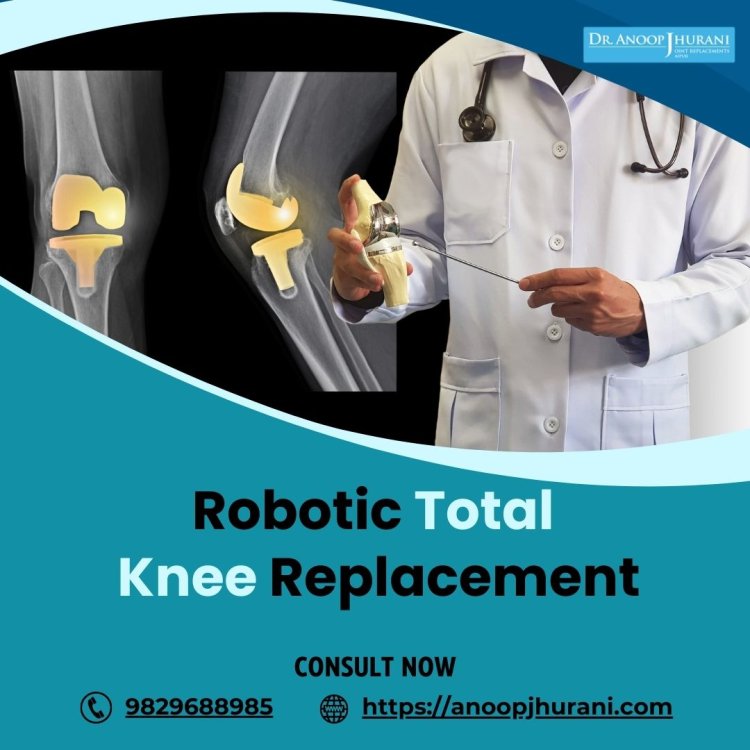The Advances in Robotic Total Knee Replacement Surgery
Dr. Anoop Jhurani is one of the knee & hip replacement doctors in Jaipur. He has performed over 12,000 successful knee and hip surgeries.
Share this Post to earn Money ( Upto ₹100 per 1000 Views )

Orthopedic surgery has witnessed a groundbreaking advancement with the introduction of robotic-assisted total knee replacement surgery. This innovative technology has revolutionized the way knee replacements are performed, offering enhanced precision, improved patient outcomes, and, above all, an increased focus on safety.
1. Preoperative Planning Solid Foundation for Safety: One of the key aspects of robotic-assisted total knee replacement surgery is the ability to create a personalized preoperative plan for each patient. Advanced imaging techniques, such as CT scans and MRI, are utilized to generate detailed 3D models of the patient's knee joint. Surgeons can then use this data to meticulously plan the surgical procedure, taking into account individual anatomical variations, ensuring accurate implant placement, and minimizing potential risks.
2. Real-time Feedback and Navigation: During the surgery, robotic systems provide real-time feedback to the surgeon, allowing for precise adjustments and corrections. Using advanced sensors and cameras, the robotic arm assists the surgeon in aligning the implant components with exceptional accuracy, reducing the risk of misalignment that could lead to postoperative complications or premature implant failure. This real-time navigation feature is a safety net, minimizing errors and optimizing overall surgical outcomes.
3. Minimally Invasive Approach: Robotic-assisted total knee replacement surgery enables a minimally invasive approach, which offers several safety benefits. With smaller incisions, patients experience reduced blood loss, less postoperative pain, and faster recovery times. The robotic technology aids surgeons in performing the procedure with meticulous precision through these smaller incisions, minimizing tissue trauma and lowering the risk of infection.
4. Customized Implants for Better Outcomes: Safety in knee replacement surgery is not solely about the procedure itself; it also involves the long-term success of the implanted joint. Robotic systems allow for the use of customized implants, designed to fit the patient's specific anatomy. This personalized approach reduces the risk of implant-related complications, such as instability, malalignment, and premature wear, leading to more sustainable outcomes for the patient.
5. Reduced Radiation Exposure: Robotic-assisted total knee replacement surgery significantly reduces radiation exposure compared to traditional techniques. Preoperative planning with advanced imaging reduces the need for intraoperative X-rays, minimizing radiation exposure for both patients and surgical staff.
Conclusion
Robotic-assisted total knee replacement surgery represents a paradigm shift in orthopedic medicine, emphasizing safety as a primary focus. This cutting-edge technology has significantly improved patient outcomes while lowering the risk of complications through personalized preoperative planning, real-time navigation, minimally invasive approaches, customized implants, and reduced radiation exposure. As this field continues to evolve, we can anticipate even further advancements in safety features, solidifying the role of robotics as an indispensable tool in modern orthopedic surgery.
Always consult with Dr. Anoop Jhurani for advice and information regarding robotic total knee replacement surgery. The safety features mentioned here are based on available research as of the date of this blog post and may be subject to future advancements and updates in the field.






